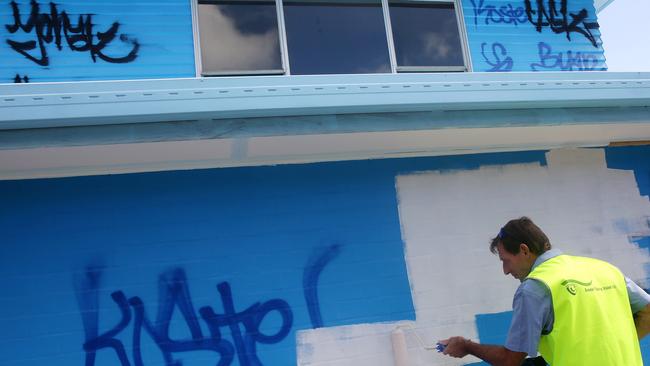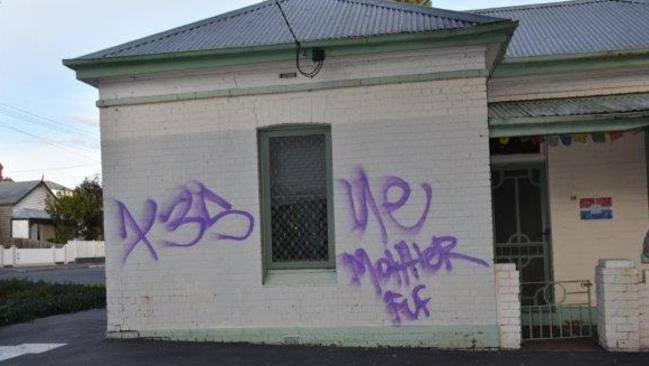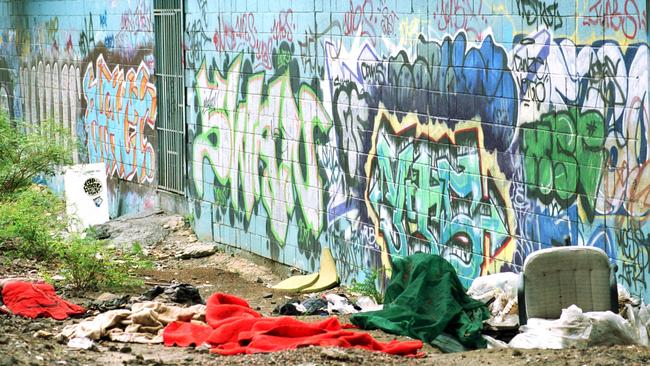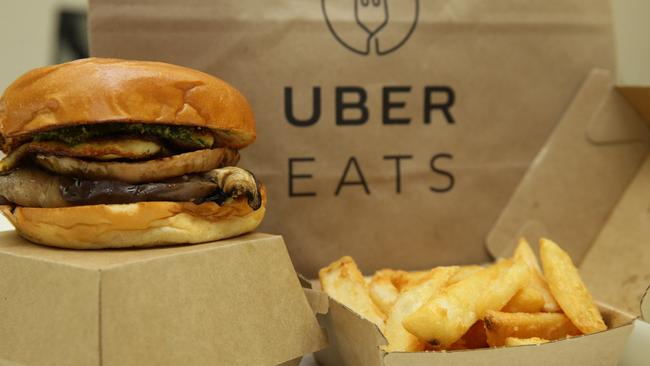Tom Elliott: Make vandals clean up their own vile mess
GRAFFITI is a blight that makes Melbourne less liveable but it doesn’t seem to bother authorities, writes Tom Elliott.

Tom Elliott
Don't miss out on the headlines from Tom Elliott. Followed categories will be added to My News.
GRAFFITI is ruining Melbourne. Everywhere you look, flat surfaces are covered with mindless scribble daubed by criminal spray-can wielders. We celebrate when Melbourne is declared the World’s Most Liveable City but in reality, it’s becoming an eyesore.
GOVERNMENT COUNCILS SHOULD NOT IGNORE GROWING GRAFFITI VANDALISM
I live in an inner suburb and tagging there is a huge problem. Not a night goes by without some vandal leaving his or her mark on nearby walls, garage doors, post boxes and telegraph poles. An old electricity substation around the corner is a favourite target.
Because it’s rarely cleaned, at least a dozen well-known vandals routinely transform it into a giant calling card for … well, I’m unsure. Most of their tags are little more than illegible scrawl; and those that can be read are usually just crude swear words.
Male dogs enjoy urinating on objects to mark their territory. Graffiti is nothing more than an ugly pissing contest conducted by semi-literate humans desperately shouting “Look at me!”.
Not all cities suffer from the blight of tagging. On a recent visit to Sydney, for example, I noticed very little graffiti in comparison with here. I’m unsure why, but residents of the Harbour City seem to take more civic pride in their neighbourhoods than Melburnians.

Several years ago, we travelled to Hawaii for a family holiday and were struck by tagging’s near complete absence there as well. And New York, which was once awash in the stuff, has cleaned up its act dramatically. So why has Melbourne become such a graffiti hotspot?
Our obsession with so-called laneway art is partly to blame.
Over the past decade or so, locations like Hosier Lane in the CBD have become a magnet for spray-painted murals. Some of these are legal (ie the property owner’s permission has been obtained), but most are not.
Instead of removing the illegal works and prosecuting those responsible, the Melbourne City Council lauds them all as tourist attractions. Art, however, is in the eye of the beholder. When a talentless vandal sees a new mural being painted in Hosier Lane, he or she thinks to themselves, “I can do that”. And shortly after, they head to an Eastern Freeway overpass to ensure their ugly tag is seen by thousands of commuting motorists every day.
Lesson 1: Clean up illegal street art and you’re on the way to eliminating graffiti.
We’re also far too tolerant of offenders when they’re caught. This week on 3AW, I took a call from Peter who despaired of the graffiti proliferating in the suburb of Hampton. Tired of cleaning up this mess himself, he asked his local council — Bayside — for assistance. Frustratingly, Bayside informed Peter that graffiti removal on the site in question wasn’t its responsibility. One day, Peter nabbed a young tagger in the act and hauled him off to the local police. Their response? No action whatsoever. According to the kid’s parents, their son was “really a good boy”. And to the frustration of the cops, even if the offender was taken to court, he’d be let off with just a slap on the wrist.

End result? The vandal in question is still out there creating spray-painted messes for Peter to remove. Why stop tagging when you know there are virtually no consequences when you’re caught?
Lesson 2: If you want to stamp out bad behaviour, arrest those responsible and punish them severely. Their fellow offenders will soon get the message.
New York shed its graffitied image 20 years ago by instituting a “Broken Window” law-and-order policy. That approach disciplines criminals for relatively minor offences in the hope it’ll prevent them from graduating to more serious misconduct.
And you know what? New York’s approach has worked. In the ’70s and ’80s, Manhattan was considered a dirty and dangerous place to be out in after dark. Now, however, it’s safe, family-friendly and largely graffiti-free.
HAWAII has also reduced tagging by making individuals responsible for cleaning the areas they once defaced. Convicted vandals are assigned several blocks they must keep clear of graffiti for a year or so. Thus, they’re turned away from the spray-can and towards brushes, detergent, paint-removing chemicals and all-important elbow grease.
This policy of making the punishment fit the crime actually works. Near my house is a church hall that is routinely tagged. Like Peter in Hampton, I routinely remove these scribblings in my own time and using funds from my own pocket. Why should law-abiding citizens like us keep the neighbourhood clean when offenders could be forced to do so by our courts?
Graffiti is not a harmless, victimless crime. It makes our city ugly, causes people to feel unsafe in their homes and represents a breakdown of law-and-order. But as Hawaii and New York prove, tagging can be defeated by making culprits pay. If Melbourne wants to retain its most liveable status, it should do the same.
Tom Elliott is 3AW Drivetime host, weekdays from 3pm to 6pm


